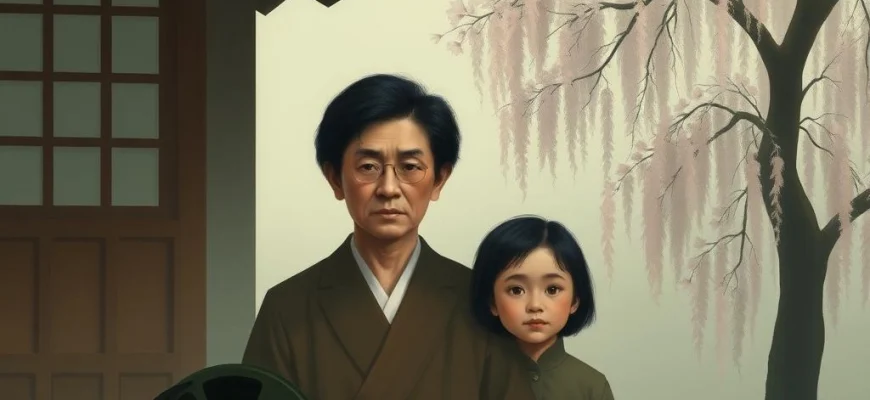If you loved the poetic melancholy and human drama of Yasujirō Ozu's Floating Weeds (1959), you're in for a treat. This article explores 10 films and shows that share its themes of family, regret, and quiet beauty. Whether you're a fan of classic Japanese cinema or simply appreciate deeply emotional storytelling, these recommendations will captivate you.

Late Spring (1949)
Description: Delicately examines themes of duty, sacrifice, and the bittersweet transition of life stages, using restrained yet emotionally powerful storytelling.
Fact: The film's iconic bicycle scene was improvised during shooting, adding a layer of spontaneity to its carefully composed narrative.
 Watch Now
Watch Now 
Rashomon (1950)
Description: Revolutionary narrative structure explores subjective truth and human nature, while maintaining a focus on character psychology and moral ambiguity.
Fact: The rain sequences were created by mixing black ink with water to achieve greater visual intensity on black-and-white film.
 Watch Now
Watch Now 
Ikiru (1952)
Description: A profound character study about finding meaning in life's final chapter, told with both melancholy and warmth through meticulous observation of human behavior.
Fact: The iconic park swing scene was shot in a single take lasting over three minutes, requiring perfect coordination between actor and camera movement.
 Watch Now
Watch Now 
Tokyo Story (1953)
Description: A poignant exploration of family dynamics and generational gaps, capturing the quiet melancholy of aging and the passage of time with a deeply humanistic approach.
Fact: Often cited as one of the greatest films ever made, it was inspired by Leo McCarey's American film 'Make Way for Tomorrow' (1937).
 Watch Now
Watch Now 
Ugetsu (1953)
Description: Blends human drama with supernatural elements to explore themes of ambition, guilt, and the consequences of neglecting family, all framed within a visually poetic style.
Fact: The film's famous ghost scene was achieved using an innovative silver paint technique that created an ethereal glow on black-and-white film.
 Watch Now
Watch Now 
Sansho the Bailiff (1954)
Description: A heartbreaking tale of familial separation and endurance against oppression, told with lyrical beauty and profound emotional depth.
Fact: The film's haunting musical theme is based on an ancient Japanese folk melody that underscores its timeless quality.
 Watch Now
Watch Now 
Throne of Blood (1957)
Description: A Shakespearean tragedy reimagined through Japanese cultural lens, featuring atmospheric tension and themes of ambition's destructive consequences.
Fact: The film's famous arrow scene used real arrows shot by expert archers at close range for maximum authenticity.
 Watch Now
Watch Now 
The Hidden Fortress (1958)
Description: While more adventure-oriented, it shares a focus on human relationships and class dynamics, presented through carefully composed visuals and character-driven storytelling.
Fact: George Lucas cited this as a primary influence for 'Star Wars', particularly in its use of lowly characters as narrative perspective.
 Watch Now
Watch Now 
The Ballad of Narayama (1958)
Description: Examines harsh rural traditions and filial piety through a visually striking, almost theatrical presentation that heightens its emotional impact.
Fact: The film's stark white snow sequences were achieved by painting the ground white, creating a surreal, otherworldly atmosphere.
 Watch Now
Watch Now 
An Autumn Afternoon (1962)
Description: A meditation on loneliness, changing social norms, and the quiet regrets of middle age, told through subtle interactions and atmospheric detail.
Fact: This was the director's final film, completed shortly before his death, making its themes of mortality particularly poignant.
 Watch Now
Watch Now 








